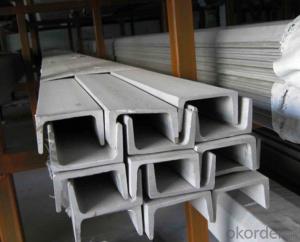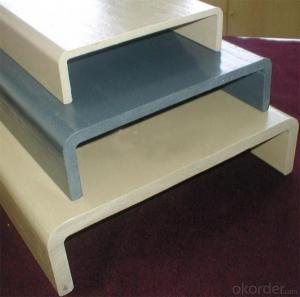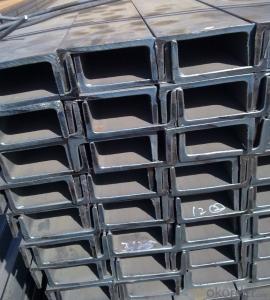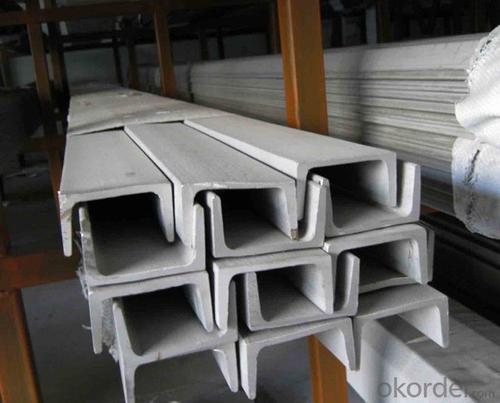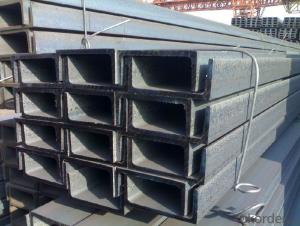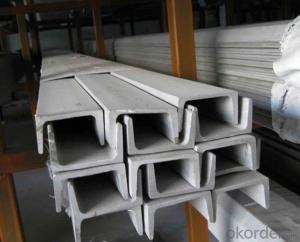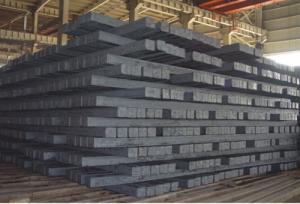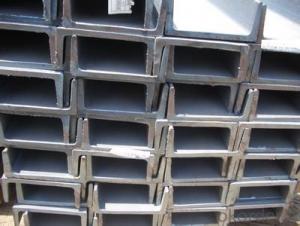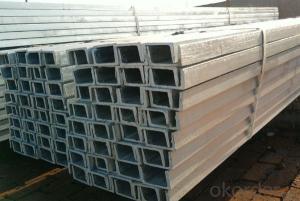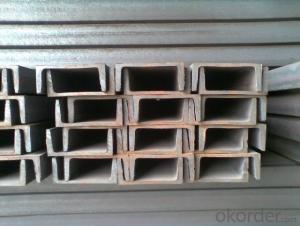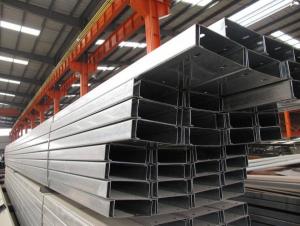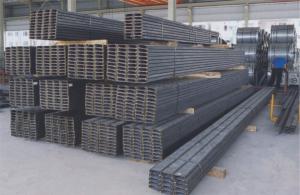GB U Channel 50MM-300MM High Quality Hot Rolled
- Loading Port:
- Tianjin
- Payment Terms:
- TT or LC
- Min Order Qty:
- 25 m.t.
- Supply Capability:
- 20000 m.t./month
OKorder Service Pledge
OKorder Financial Service
You Might Also Like
Product Description:
OKorder is offering high quality Hot Rolled Steel I-Beams at great prices with worldwide shipping. Our supplier is a world-class manufacturer of steel, with our products utilized the world over. OKorder annually supplies products to European, North American and Asian markets. We provide quotations within 24 hours of receiving an inquiry and guarantee competitive prices.
Product Applications:
According to the needs of different structures, Angle can compose to different force support component, and also can be the connections between components. It is widely used in various building structures and engineering structures such as roof beams, bridges, transmission towers, hoisting machinery and transport machinery, ships, industrial furnaces, reaction tower, container frame and warehouse etc
Product Advantages:
OKorder's Steel I-Beams are durable, strong, and resist corrosion.
Main Product Features:
· Premium quality
· Prompt delivery & seaworthy packing (30 days after receiving deposit)
· Corrosion resistance
· Can be recycled and reused
· Mill test certification
· Professional Service
· Competitive pricing
Product Specifications:
Manufacture: Hot rolled
Grade: Q195 – 235
Certificates: ISO, SGS, BV, CIQ
Length: 6m – 12m, as per customer request
Packaging: Export packing, nude packing, bundled
Sizes: 25mm-250mm | ||
a*t | ||
25*2.5-4.0 | 70*6.0-9.0 | 130*9.0-15 |
30*2.5-6.6 | 75*6.0-9.0 | 140*10-14 |
36*3.0-5.0 | 80*5.0-10 | 150*10-20 |
38*2.3-6.0 | 90*7.0-10 | 160*10-16 |
40*3.0-5.0 | 100*6.0-12 | 175*12-15 |
45*4.0-6.0 | 110*8.0-10 | 180*12-18 |
50*4.0-6.0 | 120*6.0-15 | 200*14-25 |
60*4.0-8.0 | 125*8.0-14 | 250*25 |
FAQ:
Q1: How do we guarantee the quality of our products?
A1: We have established an advanced quality management system which conducts strict quality tests at every step, from raw materials to the final product. At the same time, we provide extensive follow-up service assurances as required.
Q2: How soon can we receive the product after purchase?
A2: Within three days of placing an order, we will begin production. The specific shipping date is dependent upon international and government factors, but is typically 7 to 10 workdays.
Q3: What makes stainless steel stainless?
A3: Stainless steel must contain at least 10.5 % chromium. It is this element that reacts with the oxygen in the air to form a complex chrome-oxide surface layer that is invisible but strong enough to prevent further oxygen from "staining" (rusting) the surface. Higher levels of chromium and the addition of other alloying elements such as nickel and molybdenum enhance this surface layer and improve the corrosion resistance of the stainless material.
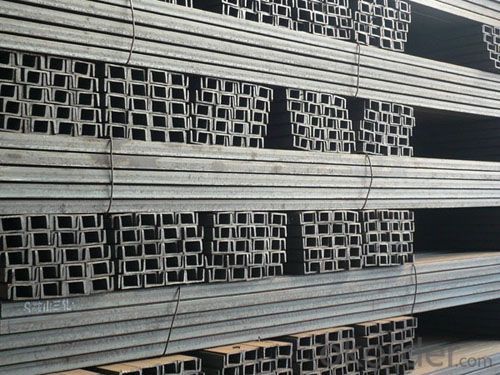
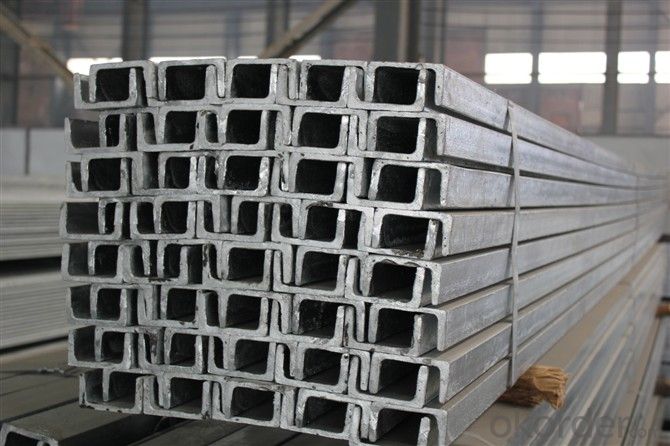
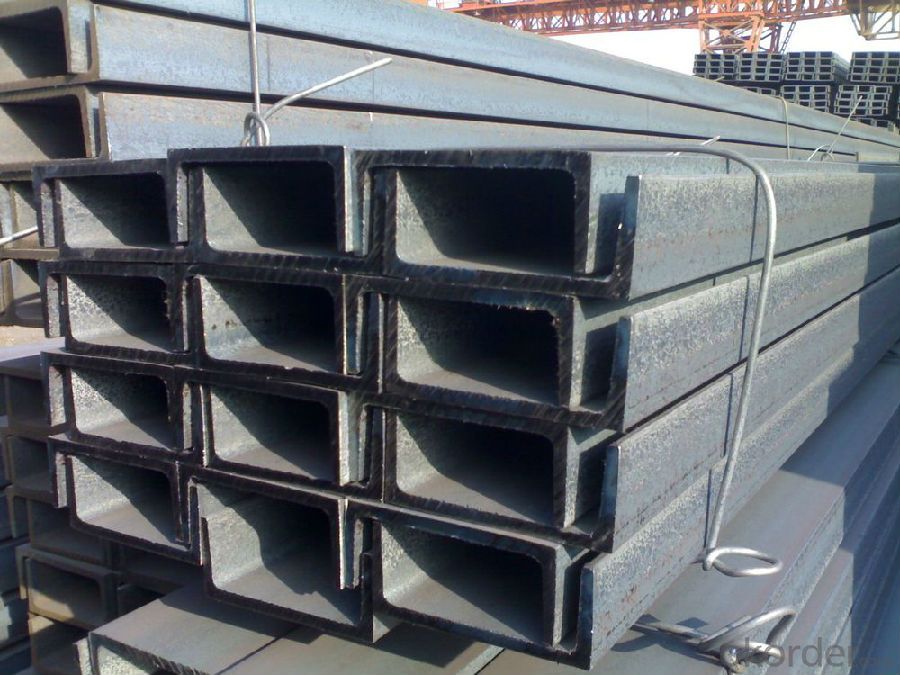
- Q: How do you calculate the deflection of steel channels?
- To calculate the deflection of steel channels, you need to consider various factors such as the material properties, dimensions, loading conditions, and support conditions. The deflection of a steel channel can be determined using the principles of structural mechanics and beam theory. Here is a step-by-step process to calculate the deflection: 1. Determine the material properties: Obtain the modulus of elasticity (E) and the moment of inertia (I) of the steel channel. These values can be obtained from material specifications or reference manuals. 2. Determine the dimensions: Measure or obtain the dimensions of the steel channel, including the height (h), width (b), and thickness (t). These measurements are necessary to calculate the moment of inertia. 3. Determine the loading conditions: Identify the applied loads, such as point loads, distributed loads, or moments, acting on the steel channel. Determine the magnitude and location of these loads. 4. Identify the support conditions: Determine whether the steel channel is simply supported, fixed at both ends, or has other support conditions. This information is critical to determine the appropriate boundary conditions for the deflection calculation. 5. Determine the type of beam equation to use: Based on the loading and support conditions, select the appropriate beam equation to calculate the deflection. Common equations include the Euler-Bernoulli beam equation or the Timoshenko beam equation. 6. Apply the beam equation: Substitute the appropriate values into the selected beam equation. This equation relates the deflection (δ) to the applied loads, material properties, and dimensions of the steel channel. 7. Solve the beam equation: Depending on the complexity of the loading and support conditions, you may need to solve the beam equation analytically, numerically, or using software tools. Analytical solutions are available for simple loading and support conditions, while numerical methods or software tools may be necessary for more complex scenarios. 8. Calculate the deflection: Once you have solved the beam equation, you can calculate the deflection of the steel channel at specific points or along its entire length. The deflection is typically measured in units of length (e.g., inches or millimeters). It is important to note that calculating the deflection of steel channels is a complex process, and it is recommended to consult relevant engineering codes, standards, or reference materials for detailed equations and procedures specific to your application. Additionally, consider seeking assistance from a qualified structural engineer for accurate and reliable results.
- Q: Can steel channels be used for window frames?
- Yes, steel channels can be used for window frames. Steel channels are strong and durable, making them an excellent choice for supporting the weight of window glass and providing structural integrity to the frame. They can be easily fabricated and welded to create custom window frames of various sizes and shapes. Additionally, steel channels have a high resistance to corrosion, which ensures the longevity and maintenance-free nature of the window frames. However, it is important to consider the thermal conductivity of steel, as it can result in heat loss or gain through the frame. To overcome this, thermal breaks or insulation can be incorporated into the design of the window frame. Overall, steel channels offer a reliable and versatile option for window frames in both residential and commercial applications.
- Q: Can steel channels be used in the telecommunications industry?
- Yes, steel channels can be used in the telecommunications industry. Steel channels are commonly used as cable trays and support systems for telecommunications cables. They provide a sturdy framework for routing and organizing cables, ensuring proper cable management and preventing damage. Additionally, steel channels are known for their durability and strength, making them suitable for withstanding the weight of heavy cables and equipment. They can also be easily customized and modified to accommodate specific requirements in the telecommunications industry. Overall, steel channels offer a reliable and cost-effective solution for cable management in the telecommunications sector.
- Q: Are steel channels suitable for temporary structures?
- Yes, steel channels can be suitable for temporary structures. Steel channels are commonly used in construction for their strength and durability. They are versatile and can be easily fabricated and assembled to create temporary structures such as scaffolding, shoring, and temporary supports. Steel channels provide stability and load-bearing capacity, making them ideal for supporting temporary structures during construction or event setups. Additionally, steel channels are resistant to weathering and can withstand heavy loads, ensuring the safety and stability of the temporary structure.
- Q: Larry Midas in seeking to inform how to model such as: steel, double steel, double channel
- If civil is set in the channel, double cross section library inside, Larry is through the section properties of I-steel calculator, drawing DXF graphics in CAD, import
- Q: Is channel steel expensive or angle expensive?
- Specific look at what type of equilateral angle iron, different specifications of the difference, the channel is also, 63*63 angle steel and 80 groove, usually about the same
- Q: Can steel channels be used for overhead crane support?
- Yes, steel channels can be used for overhead crane support. Steel channels are commonly used in construction and industrial applications due to their strength and durability. They provide a stable and reliable support structure for overhead cranes, allowing them to safely lift and move heavy loads.
- Q: 14# dimension of channel steel and weight per metre?
- Dimensions and weight of light rolled channel steel14#a height (H) 140, leg width (b) 62, waist thickness (d) 4.9, theoretical weight 13.3 kg14# height (H) 140, leg width (b) 58, waist thickness (d) 4.9, theoretical weight 12.3 kg
- Q: Use two long five meters of 10# channel steel load-bearing frame, the maximum load is?
- Set a span of 4.8m, two 10#Q235 channel parallel, as the beam, the required load is concentrated load, the role in the middle of channel.
- Q: What are the different grades of steel channels?
- Steel channels come in various grades, each possessing unique properties and applications. Some commonly used grades are as follows: 1. A36: The most widely used grade, A36 steel channel finds its application in construction and structural projects. It boasts a minimum yield strength of 36,000 psi and is easily machinable and weldable. 2. A572: A high-strength, low-alloy (HSLA) steel channel grade, A572 offers superior strength and durability compared to A36. It is commonly employed in heavy-duty applications like bridges and buildings. 3. A588: This grade is renowned for its corrosion resistance, making it ideal for outdoor or exposed environments. It is frequently utilized in construction projects exposed to harsh weather conditions. 4. A709: Another HSLA steel channel grade, A709 provides high strength and enhanced corrosion resistance. It is commonly used in bridge construction and other structural applications. 5. A992: A high-strength, low-alloy steel channel grade, A992 is frequently employed in construction and structural projects. It possesses higher yield and tensile strength than A36, making it suitable for heavy-duty applications. 6. Stainless Steel: Apart from carbon steel channels, stainless steel channels are also available in grades like 304 and 316. These grades offer excellent corrosion resistance and are commonly used in industries such as food processing, pharmaceuticals, and marine applications. Selecting the appropriate grade of steel channel is crucial, considering factors like strength, corrosion resistance, and environmental conditions. Consulting a structural engineer or steel supplier can assist in determining the most suitable grade for a specific application.
Send your message to us
GB U Channel 50MM-300MM High Quality Hot Rolled
- Loading Port:
- Tianjin
- Payment Terms:
- TT or LC
- Min Order Qty:
- 25 m.t.
- Supply Capability:
- 20000 m.t./month
OKorder Service Pledge
OKorder Financial Service
Similar products
Hot products
Hot Searches
Related keywords
